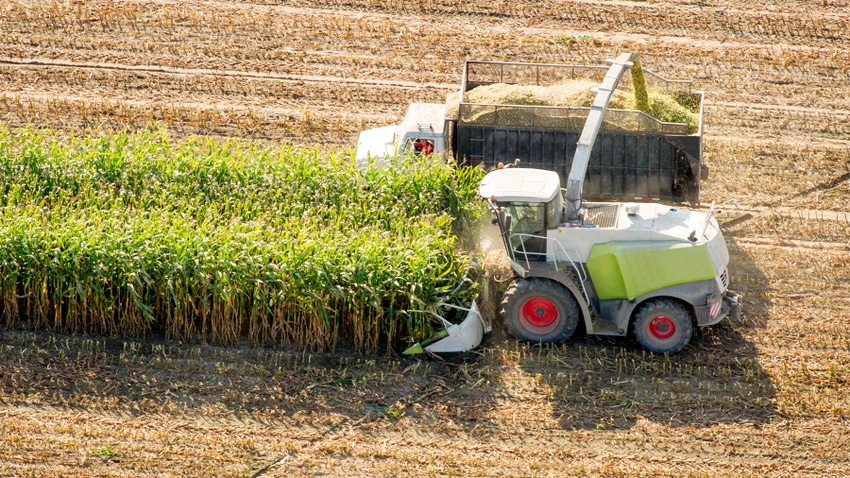
Over the past 10 years in corn and beef country across the Midwest, corn silage has been among the most economical forage sources. It works great as a staple crop for dairies, but silage is also an optimal forage source for backgrounding calves and for feedlots.
“Silage is not a new crop or idea,” says Galen Erickson, Nebraska Extension beef feedlot nutrition specialist, “but some new approaches and understanding are illustrating how important it is in our integrated crop-beef systems.”
That sentiment will most likely be supported at the fifth biennial Silage for Beef Conference, which will convene June 20 at the Eastern Nebraska Research, Extension and Education Center near Mead, Neb.
Hosted by the University of Nebraska-Lincoln, Iowa State University and Lallemand Animal Nutrition, the conference will gather leaders in beef cattle nutrition, silage management and agricultural research over the topic of silage.
Economical feed source
"This year’s Silage for Beef Conference will address key challenges faced by beef producers, offering practical solutions and innovative approaches to silage management from industry experts across the country," says Kip Karges, technical services manager at Lallemand Animal Nutrition. "This summit is a unique opportunity for beef producers nationwide to connect with peers, enhance their silage practices and drive success in their operations."
Erickson says that silage, if priced correctly, is about 70% of the price of corn grain on a dry basis, and many forage hays are equal to the corn price.
“Silage is about 75% to 80% of the energy of corn, whereas hay can vary, but is usually 60% or less the energy of corn. It just makes good sense as a forage source for feeders and backgrounding calves,” he adds. “It can also be fed to cows, but it is often too good, so it would have to be limited.”
Another advantage, Erickson says, is that silage is processed at harvest, so it doesn’t require grinding and saves producers from all the losses that occur from feeding round bales or grinding.
“All that said, it has to be harvested at correct moisture, packed correctly, and covered to minimize losses during harvest or feed out from the bunker,” he notes.
The Silage for Beef Conference will cover these and other aspects of silage production, harvest and feeding, equipping beef producers with actionable insights and strategies to optimize silage quality, enhance cattle performance, and boost the bottom line for the operation.
“We will discuss all things that producers can do that improve their silage options, such as when to harvest, optimizing storage, and we’ll hear from other producers and custom harvesters about how to improve what they are already doing or how to get started using silage and offsetting more expensive options,” Erickson says.
Over the past decade, these same sponsors have teamed up for four previous conferences such as this. Participants are expected to travel from across the U.S. to attend. There is also an opportunity to view the sessions over livestream. Register by June 7 for the conference to join in person or virtually at bit.ly/3TAUYe9.
Speakers on silage
Here is a list of sessions and speakers participating.:
Steps to Success: Enhancing Silage Quality Through Timing Considerations. Galen Erickson, cattle industry professor of animal science and beef feedlot Extension specialist, University of Nebraska – Lincoln.
The Silage Ecosystem: Negative Consequences of Improper Silage Fermentation. Duarte Diaz, associate professor, School of Animal and Comparative Biomedical Sciences, University of Arizona.
Strategies For Silage Pile Management: Safety, Density and Nutrient Preservation. Renato Schmidt, forage technical services, Lallemand Animal Nutrition, North America.
Navigating the Field: Best Practices for Interacting with Custom Harvesters Panel Discussion. This is moderated by Jessica Sperber, Extension assistant professor and feedlot specialist, University of Nebraska-Lincoln.
Using Earlage in Feedlots. Zachary Smith, assistant professor, animal science, South Dakota State University.
The Role of Silage in Beef Systems. Jim MacDonald, professor of ruminant nutrition, University of Nebraska – Lincoln.
Optimizing Your Silage Investment: Key Takeaways. Kip Karges, technical services manager for Lallemand Animal Nutrition, North America.
A news release from Lallemand Animal Nutrition contributed to this article.
About the Author(s)
You May Also Like






